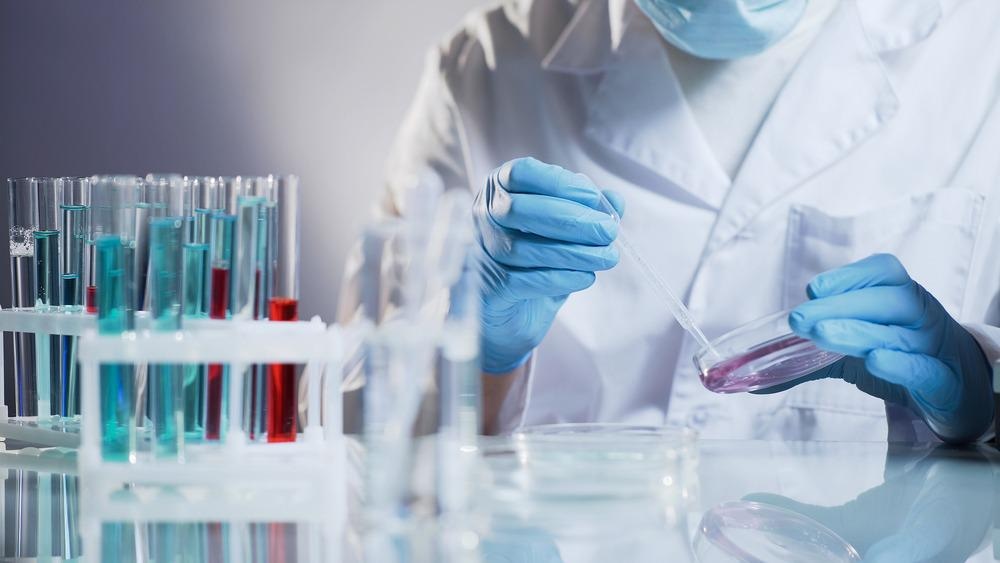Nanomaterials are widely used in biosensors to enhance their sensitivity in detecting impurities in trace quantities. In an article recently published in the journal Chemosphere, the authors synthesized bioinspired nanomaterials using leaf extract from aqueous Cucurbita pepo Linn.

Study: In vitro toxicological assessment and biosensing potential of bioinspired chitosan nanoparticles, selenium nanoparticles, chitosan/selenium nanocomposites, silver nanoparticles and chitosan/silver nanocomposites. Image Credit: Motortion Films/Shutterstock.com
The team depicted the physicochemical properties of synthesized nanomaterials using microscopic and spectroscopic techniques. Further, they tested synthesized nanomaterials for hydrogen peroxide (H2O2) sensing, antibacterial interactions, and embryotoxicity.
Nanomaterial Synthesis and Their Application
Chitosan nanoparticles (Cs NPs), selenium nanoparticles (Se NPs), chitosan/selenium nanocomposites (Cs/Se NCs), silver nanoparticles (Ag NPs), and chitosan/silver nanocomposites (Cs/Ag NCs) have widespread applications in biomedical and environmental research. Hence, the cost-effective, facile, quick synthesis of these nanomaterials with good stability is crucial.
Although previous reports precedented the preparation methods for these nanomaterials, the use of toxic chemicals in their reduction and stabilization process restricts their reproducibility. There is a need for an environmentally benign approach to synthesizing nanomaterials.
H2O2 is formed as a by-product during biological processes and has its applications in paper, food, and pharmaceutical industries. However, its presence in the environment contaminates water resources and causes a threat to aquatic life. Hence the detection of H2O2 in water resources is critical.
Enzymatic, non-enzymatic, or nanomaterial-based electrochemical methods were reported previously for analyzing H2O2. However, there are no reports to date on bioinspired nanomaterial-based electrochemical methods.
Bioinspired Nanomaterials
In the present study, the authors synthesized bioinspired Cs NPs, Se NPs, Ag NPs, Cs/Se NCs, and Cs/Ag NCs using the aqueous Cucurbita pepo Linn. leaves extract. Further, they discussed the biosensing activity, antimicrobial properties, and embryotoxicity of synthesized nanomaterials.
The physicochemical properties of the prepared nanomaterials were confirmed using microscopic and spectroscopic techniques. The authors employed cyclic voltammetry (CV), chronoamperometry (CA), and electrochemical impedance spectroscopy (EIS) methods to confirm their H2O2 sensing properties. The inhibitory activity of the nanomaterials corroborated their antibacterial property. The authors tested the biocompatibility of the synthesized nanomaterials through an embryo toxicity test.
Characterization and Biological Evaluation of Bioinspired Nanomaterials
The crystal structures of synthesized nanomaterials were determined using high-resolution X-ray diffraction (HR-XRD). Cs NPs displayed peaks at a 2θ value of 11.7 and 20.2 degrees. The 2θ angle for Se NPs was between 20 to 30 degrees. The combined patterns of Cs NPs and Se NPs were shown in Cs/Se NCs with Cs NPs peaks at approximately 11.7 and 19.8 degrees, and for Se NPs, the 2θ angles observed at 23.5, 29.9, 41.3, 44.4 and 46.9 degrees. For Ag NPs, these peaks were at approximately 27.4, 32.3, 35.7, and 53.1 degrees. Further, Cs/Ag NCs displayed peaks at 11.7 and 19.8 degrees, corresponding to Cs NPs, and approximately 38.1, 44.2, 64.1, and 77.2 degrees for Ag NPs.
Fourier transform-infrared spectroscopy (FT-IR) of the synthesized nanomaterials showed broad bands at 3200 to 3400-centimeter inverse corresponding to O-H stretching. Further, all synthesized nanomaterials displayed the same peak for the stretching of a water molecule at a frequency between 1570 and 1600-centimeter inverse.
Peaks between 1350 to 1410-centimeter inverse correspond to C-H bending vibration. Moreover, the peaks observed for all the synthesized nanoparticles between 420 and 460-centimeter inverse shows metal-metal stretching in all the nanomaterials.
The results from transmission electron microscopy (TEM) and field emission-scanning electron microscopy (FE-SEM) revealed the size of nanoparticles to be between 100 and 200 nanometers. The presence of secondary metabolites on the exterior of NPs resulted in overall increased size. The TEM and FE-SEM images of Se NPs reveal their spherical-shaped, polydispersed structure of approximately 100 nanometers in size. The TEM and FE-SEM images of Cs/Se NCs show uniform distribution of Se NPs with Cs envelope around NPs. A similar trend was observed in Cs/Ag NCs, while the Ag NPs appeared as aggregates surrounded by Cs.
Among all the synthesized nanomaterials, Cs/Ag NCs-based H2O2 sensor exhibited good analytical performance due to catalytic properties and excellent conductivity of Ag NPs embedded in the Cs matrix.
The antibacterial activity of synthesized nanomaterials tested against Gram-positive (Staphylococcus aureus and Bacillus cereus) and Gram-negative (Salmonella typhimurium and Escherichia coli) bacteria revealed better inhibition against Gram-negative bacteria. This selective behavior of nanomaterials was due to their affinity toward the peptidoglycan layer of Gram-negative bacteria, followed by nanomaterial facile penetration and activity.
However, the complexity of cell walls in Gram-positive bacteria did not facilitate surface interaction or penetration of nanomaterials. Among all the nanomaterials, Ag NPs, and Cs/Ag NCs showed good activity against Gram-negative bacteria.
The embryotoxicity of synthesized nanomaterials in embryonic zebrafish revealed lower toxicity of Cs NPs, Cs/Se NCs, and Cs/Ag NCs than Se NPs and Ag NPs. The reduced toxicity was due to the pristine preservation of nanomaterials in the Cs matrix.
Conclusion
In conclusion, the synthesized bioinspired nanomaterials tested for their H2O2 biosensing, antibacterial activity, and embryotoxicity revealed excellent H2O2 sensing properties and antibacterial activity against Gram-negative for Cs/Ag NCs. Moreover, the reduced embryotoxicity observed for Cs/Ag NCs implies its biocompatibility. The obtained results demonstrate the applications of chitosan and silver hybrid nanocomposite in biomedical and environmental research.
Reference
Krishnaraj, C., Radhakrishnan, S., Ramachandran, R., Ramesh, T., Kim, B and Yun,S. (2022) In vitro toxicological assessment and biosensing potential of bioinspired chitosan nanoparticles, selenium nanoparticles, chitosan/selenium nanocomposites, silver nanoparticles and chitosan/silver nanocomposites. Chemosphere. https://www.sciencedirect.com/science/article/pii/S0045653522012838
Disclaimer: The views expressed here are those of the author expressed in their private capacity and do not necessarily represent the views of AZoM.com Limited T/A AZoNetwork the owner and operator of this website. This disclaimer forms part of the Terms and conditions of use of this website.